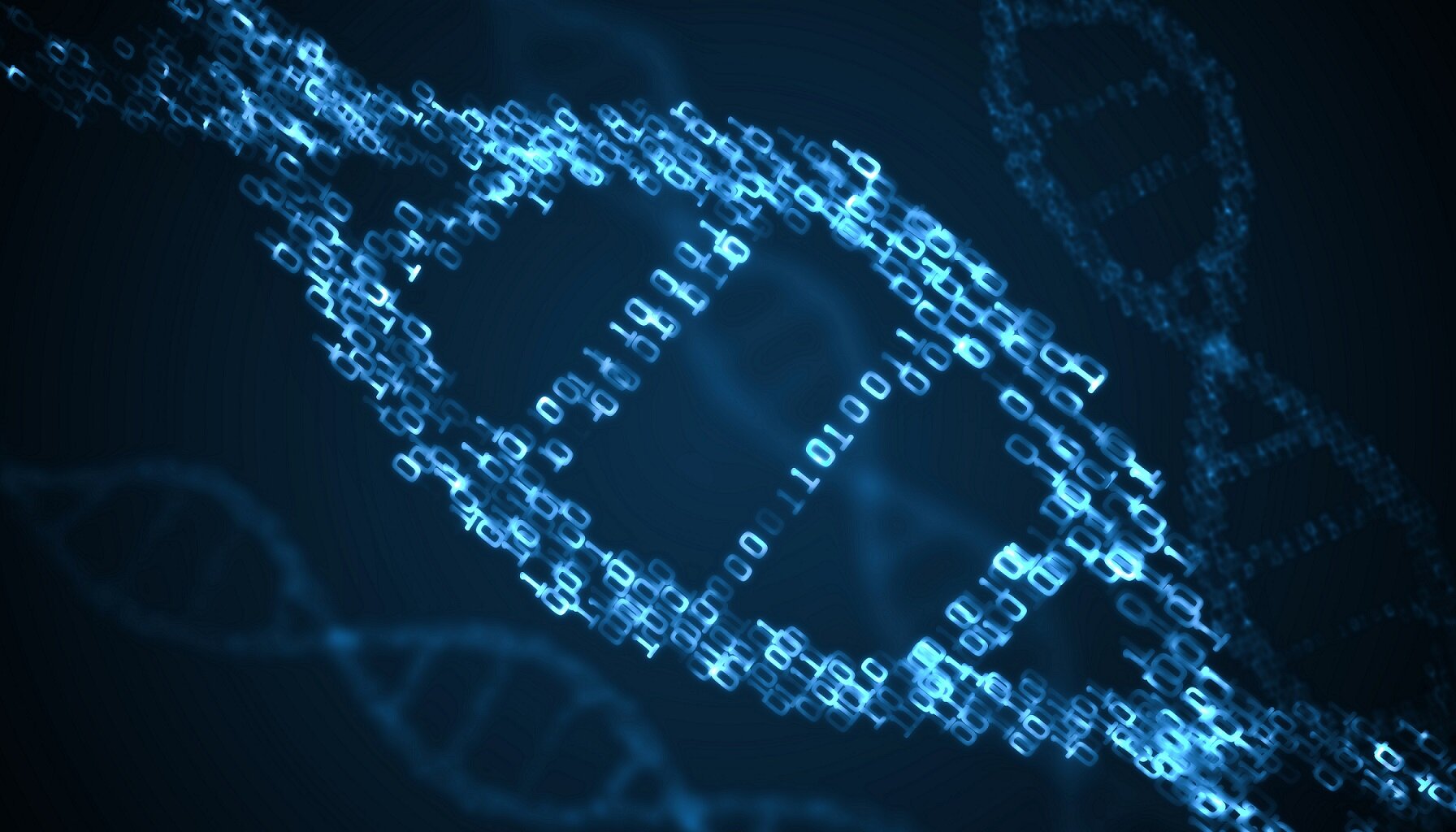The extraordinary double helix molecule that makes life possible, known as DNA, is the primary carrier of our genetic code. Stored on it are the instructions needed for the development, replication, growth, and working of all known organisms.
DNA is over a million times more effective in saving information than even our best high-tech efforts at data storage. Interestingly, it is actually possible to encode binary data on synthetic DNA. But, sadly, staggeringly slow read and write speeds make it unsuitable for real-world applications.
However, scientists are currently working towards a breakthrough proposing a faster technique for encoding data to synthesized strands of DNA. If they succeed, the world may enter a new era of neuron recording and digital data storage.
It is possible to encode and decode binary data to and from synthesized strands of DNA - Image Credit: vchal via Shutterstock / HDR tune by Universal-Sci
To be fair, there have been some interesting accomplishments in the past already. For example, in 2019, researchers performed an impressive feat by storing the entire English Wikipedia (only the text, which consisted of approximately 16 gigabytes of data) on synthetic DNA.
Unfortunately, as mentioned in the introduction, DNA as a storage medium is not yet suitable for practical use due to its very limiting read and write speeds, but if we were to succeed in making it work, we could store all the digital data on Earth on just a few hundred pounds of DNA, saving a tremendous amount of space and energy.
Scientists at Northwestern University in Illinois are determined to solve the remaining issues with DNA data storage and proposed a novel technique for recording information to DNA that takes mere minutes instead of several hours or even days to finish. They published their findings in the Journal of the American Chemical Society.
The researchers utilized a unique enzymatic system to manufacture synthetic DNA that records quickly changing environmental signals straight into DNA sequences, a technology that the paper's senior author, Dr. Keith E.J. Tyo, believes might revolutionize how scientists study and record neurons in the brain.
In a press release, Tyo explained that nature is very skilled in copying DNA, but he and his team desired the ability to write DNA from scratch.
According to Tyo, contemporary ex vivo (outside the body) methods involve a sluggishly slow chemical synthesis. His team's technique makes it much cheaper to write data due to the fact that the enzyme that synthesizes the DNA can be directly manipulated.
Tyo continued by mentioning that even state-of-the-art intracellular recordings are slower as they necessitate the mechanical steps of protein expression in response to signals, as opposed to his team's enzymes which are all expressed in advance and can continuously store data.
If we replace all conventional cold-line storage with DNA based technology we would save a substantial amount of space and an imaginable amount energy - Image Credit: cigdem via Shutterstock / HDR tune by Universal-Sci
Improving current methods of data storage on DNA
This part gets slightly more technical: current techniques for recording intracellular molecular and digital information to DNA are heavily dependant on multipart processes that combine new information with existing DNA sequences. Researchers must activate and inhibit the expression of particular proteins in order to obtain an accurate recording, which can take up to 10 hours.
Tyo's lab proposes they could use a new technique they dubbed 'Time-sensitive Untemplated Recording' using Tdt for Local Environmental Signals (or TURTLES for short) to synthesize entirely new DNA rather than copying a template of it, creating a faster and higher resolution record.
As the DNA polymerase proceeds to add bases, data is recorded into the genetic code on a scale of minutes as alterations in the environment impact the composition of the DNA it synthesizes. The environmental changes, such as fluctuations in the concentration of metals, are recorded by the polymerase, acting as a sort of "molecular ticker tape," registering the time of an environmental mutation.
Using biosensors to record these changes into DNA represents a significant step in establishing TURTLES' viability for use inside cells. It could give researchers the capacity to use recorded DNA to learn about how neurons communicate with each other.
According to Namita Bhan, co-first author of the paper, this is a fascinating proof of concept for techniques that may let us study the interactions between millions of cells simultaneously in the future.
Using DNA to store archival data
It is estimated that global information storage needs will reach approximately 175 zettabytes by the year 2025.
One particular element where the TURTLES technique excels is long-time archival data storage. The type of storage that you write once but never read unless an incident occurs and a backup is needed.
Besides storage, the aforementioned' ticker tape' function can potentially be used as a biosensor to look for contamination in drinking water.
Potential advantages for future brain research using biorecording technology
Thanks to its increased scalability and precision, TURTLES can also provide the foundation for technologies that propel brain research ahead.
With current technology, scientists can only examine a small percentage of a brain's neurons, and even then, there are limits to what they can learn. However, scientists were able to track responses to stimuli with single-cell precision across many (million) neurons by putting recorders within all of the brain's cells.
As reported by Alec Callisto, another co-first author of the paper, looking at the rate of improvement of contemporary technology, it could take several decades before we can even record the entire brain of a cockroach simultaneously, not to mention the enormously more complex human brain. However, he and his team aim to accelerate this progression significantly.
Imagine the impact being able to record millions of neurons in the brain at once would have on brain research - Image Credit: whiethoune via Shutterstock/HDR tune by Universal-Sci
The future of TURTLES
While Tyo's laboratory is currently concentration on developing beyond proof of concept in both cellular and digital DNA recording, the crew expressed optimism that other engineers will be interested in the concept and be able to utilize it to capture critical signals for their study.
Tyo: "We're still building out the genomic infrastructure and cellular techniques we need for robust intracellular recording; this is a step along the way to getting to our long-term goal."
If you are interested in more details about the research done by Tyo and his colleagues, be sure to check out the paper listed below
Sources and further reading:
The libraries of the future will be made of DNA (Universal-Sci)
Close-Up View of DNA Replication Yields Surprises (Universal-Sci)
Recording Temporal Signals with Minutes Resolution Using Enzymatic DNA Synthesis (Journal of the American Chemical Society)
DNA digital data storage (Wikipedia)
Intracellular recording (Scholarpedia)
Math shows how DNA twists, turns, and unzips (Universal-Sci)
If you enjoy our selection of content consider subscribing to our newsletter (Universal-Sci Weekly)
FEATURED ARTICLES:










